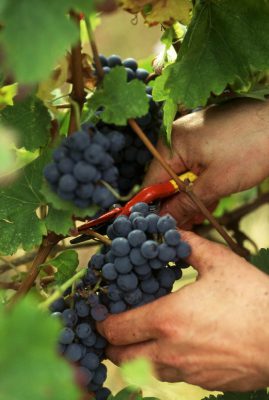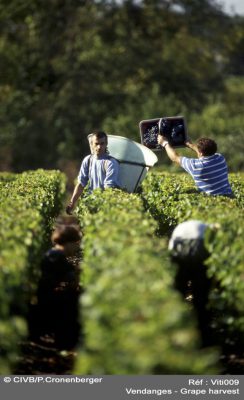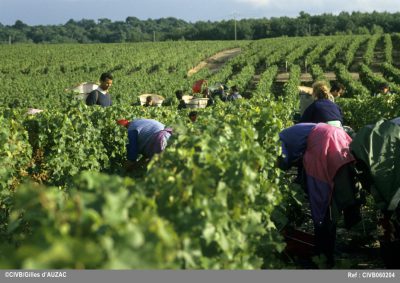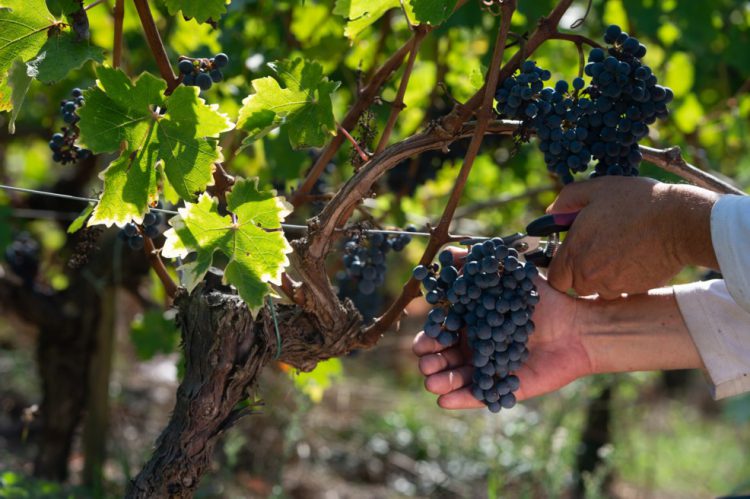2019 HARVESTS
The year’s weather was fairly mild for the Bordeaux vineyards, in particular limiting the pressure from vine diseases: little rainfall during the winter, remarkable sunshine in February and March. However, there were a few noteworthy spring frosts and localised hail storms.
The summer’s temperatures, at times scorching (with all-time highs in July), slowed the ripening of grapes suffering from water stress, but the mid-August rains were beneficial.
Consequently, the vineyard’s health is highly satisfactory, and the current conditions are ideal: warm days and cool nights – excellent for allowing the aromas to develop.
Here we go!
The first grapes were picked on August 27th for the Crémants de Bordeaux and the earliest-ripening white grape varieties. A traditional harvesting date, compared to the especially early harvests in recent seasons, marked by climate change.
 2019: a vintage full of hope – The calendar
2019: a vintage full of hope – The calendar
- Climate change has had an impact on (earlier) harvesting dates in recent years, but this year is witnessing a return to a more traditional calendar.
- The first grapes harvested in Bordeaux, late August, are reserved for making Crémant wine, as freshness and acidity are the much sought-after characteristics.
- Harvesting of white grape varieties (especially Sauvignon and Sémillon), earmarked for producing dry white wine, began at the same time.
- Harvesting of dark grape varieties, reserved for making red wine (making up 89% of Gironde vineyards), are going to begin around September 20th with Merlot, the earliest varietal, mainly planted on the right bank’s clayey-limestone soils.
- Next will come the Cabernet harvests (Cabernet Franc and Cabernet Sauvignon), more emblematic on the left bank. They should last until mid-October.
- Finally, the botrytised grapes, for making sweet and semi-sweet wines, will continue to be harvested through late October, or even early November, depending on the weather. (Botrytis is the noble rot that grows in the south of the Gironde due to the humidity created by the Ciron river and the warmth of the soil.)
“We’re excited and enthusiastic as we tackle this stage of harvesting; it definitely marks the culmination of a whole year of work. All systems are go, technically speaking, which augurs well for a promising vintage.” Bernard Farges, President of the Bordeaux Wine Council (CIVB)
The practices
- Most of the harvesting in Bordeaux is mechanical. The accuracy and high performance of the machines make it possible to preserve grape integrity and quality.
- Optimal grape ripeness is sought to achieve fresh and fruity wines, with practices that are evolving, such as: – conducting more intra-plot harvesting (plots harvested in several stages depending on the desired ripeness of the bunches) ; – striving to attain softer tannins and well-developed anthocyanins ; – tasting grape seeds to determine the aromatic maturity: the pips need to be crunchy and woody, with dry fruit aromas; – – picking grapes at daybreak, for whites and rosés, to ensure the grapes remain cool and aromas are preserved.
The volumes
Following two vintages complicated by bad weather (40% drop in production in 2017 due to frost, and a 2018 vintage marked by unusually virulent powdery mildew), the 2019 volumes should be back in line with the 10-year average, around 5 million hectoliters. However, the weather in September (sunshine, heat and rainfall) will be a determining factor for both the quantity and quality of the 2019 vintage.


